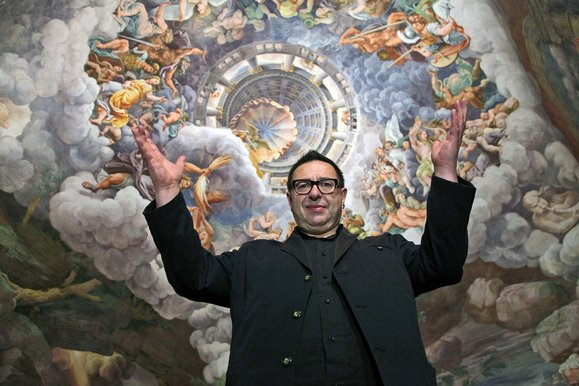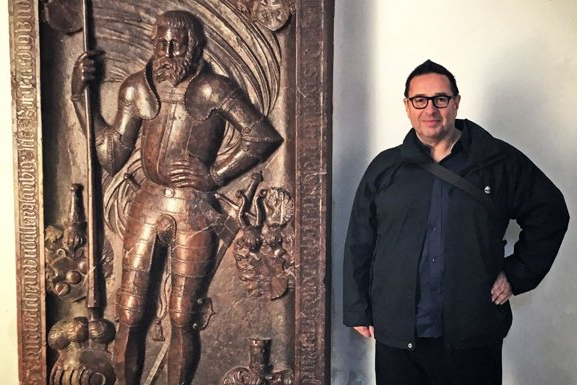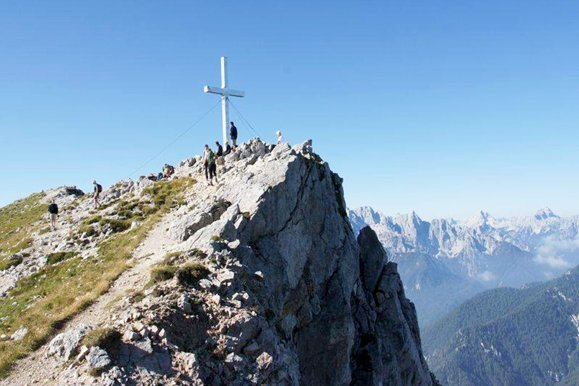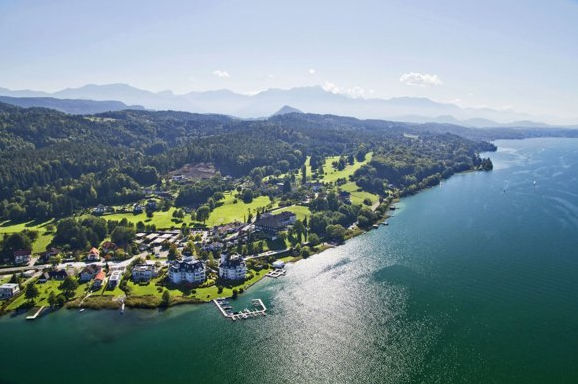I HAVE just spent £14,000 plus a few hundred. It is the most I have spent on anything except my house, my car and my Picasso. When the bill came, needles of fear spiked through my throat: the credit cards will bounce. But they didn’t. On reflection, it may well be the best money I have spent. Besides, I could always sell the Picasso.
To understand why, you need to see me now. Who is that svelte and sun-drenched chappie banging away at the keyboard, you will think? Surely that isn’t porky Januszczak, the fattest arts presenter on the telly. What’s happened to the man? He’s gone from widescreen to standard.
Actually, I have lost 14kg. Which is two- and-a-bit stone in Brexit English. And that’s not all. My stools, about which I have had cause to talk several times a day for the past month to the likes of the head of couture for a London fashion designer and the woman who runs one of Europe’s most famous jeweller’s, have finally returned to a reassuring solidity. My cholesterol is down. My blood sugar is perfect. Even my magnesium levels have become exciting. And I didn’t even know I had any of those!
The rich and travelled among you will, of course, know immediately what has happened to me and where I have been. Fourteen kilos? He’s been to the Mayr, you’ll be thinking. He’s been eating stale bread for a month, chewing it 30 times before swallowing, then washing down the mush with vegetable broth sipped with a teaspoon. Yup. Guilty as charged. I’ve been to the Mayr.
In my defence, and being as how I generally occupy a different orbit from these high-flyers, let me assure you that until just after Christmas I had never heard of the place. So unfamiliar was I with the Original FX Mayr Health Centre that I didn’t even realise it was in Austria.
What, then, happened to porky Januszczak that was so profound it drove him into the hands of the Austrians? Reader, it was ghastly. And nearly fatal. Back at the beginning of December I was Dysoning the hall — a rare event — when my unfamiliarity with the process caused me to slip on the wooden floor and slide into a bookcase at high speed.
When I finally managed to pull myself upright the pain in my ankle was so biting I assumed I had sprained it. Give it a couple of days and it would be OK.
Over the next three weeks I had to finish off a television series on the Renaissance I was making for the BBC, and every single day was spent either in an edit suite or a sound booth, whispering words of truth into the ether. All the while my leg hurt. I kept assuming it would get better but it didn’t. It got worse. Just before Christmas, after an especially bumpy bus ride to Soho, it swelled up even more and began hurting around the clock. So painful was it that I self-diagnosed it as an attack of gout. Nothing else could hurt that much.
Every night, I would get up several times and sink it into a bath of cold water for as long as I could bear. Nothing else seemed to help. After 10 days of soaking, the swelling went down a bit and I decided I could probably bear to go on the plush new year holiday I had booked for us in Sri Lanka. Having paid upfront for an exclusive beachside villa with a swimming pool in the garden, it seemed criminal to miss out. So, for the first time in my life, I organised some airport assistance at Heathrow, hobbled onto the plane and off we went.
The doctors are uncertain whether the thrombosis occurred on the way over or on the flight back. I reckon it must have been on the flight back, as my leg did not actually turn purple until I returned. By now I had intuited that it wasn’t just a sprain — I’m sharp that way! Every time I pulled on my trousers, the left leg went in easily but the right one had to be forced over my newly enormous calf.
Two days after getting back I went to watch my team, Reading, play Huddersfield in the FA Cup, and after walking 20ft from the car began to feel absurdly breathless — as if I had run up a huge set of stairs. I thought I was having a heart attack. The next day, after another night of soaking my foot, I forced myself into my doctor’s morning timetable. As soon as I mentioned the long-haul flight to Sri Lanka she sent me off to the hospital for tests. I spent the rest of the day giving blood samples.
At 6 o’clock in the evening they finally confirmed I had had a DVT — deep vein thrombosis — and that the blood clot had broken up and was now speckled densely across my lungs. I would have to be kept overnight for observation. In the end, I was in there for four days, trying to stay calm in the serious pulmonary problem ward. One old lady died by my side. Two others were coughing so continually they must have gone by now.
It was in the hospital that I decided I needed to do something drastic about myself. Assuming I actually made it out of there. Plugging in my laptop I typed “best health clinic” into Google and up came the Mayr. There were lots of articles about it, all of which warned of the starvation conditions and the Epsom salts, before going on to delight in the amazing effect the deprivation had on people.
The piece that tipped the scales for me described a short stay in the clinic by Michael Gove, who apparently managed to lose a couple of stone and then emerged on Newsnight looking sharply etched and bright. Anything that can improve Gove, I ruminated, must work on me. I booked myself in for three weeks, with an extra week pencilled in.
The sprained ankle caused by my domestic sliding turned out to be two torn ligaments in the foot. These had caused the swelling. The swelling had caused the thrombosis. If the blood clot had gone to my head instead of my lungs, Porky the arts presenter would have waddled no more. I lurched around as many exhibitions as I could on my new crutches, stockpiled some reviews for the Easter period and jetted off to Ljubljana, in Slovenia, where a Mercedes awaited me and transported me across the border to the Mayr on Lake Wörthersee, in Carinthia, southern Austria.
The Mayr clinic was co-founded by Dr Erich Rauch in 1976. But its origins go back much further, to the research of Franz Xaver Mayr, who decided, back at the start of the 20th century, that the intestines were the key to human happiness. Look after your guts and your guts will look after you. In particular, Mayr’s research highlighted the importance of regular fasting for the continuance of human wellbeing. And when his student, Rauch, opened the first Mayr clinic in a converted golf hotel on the banks of the beautiful Lake Wörthersee he placed enforced starvation at the centre of the experience.
It is now clear that Rauch was ahead of his time. The current popularity of the 5:2 diet is just a belated tipping of the hat to the Mayr method. Rauch’s other guiding principle — that most of our diets are too acidic and that we need to return to a more alkaline balance — is also the cure that Victoria Beckham and Gwyneth Paltrow have been gushing about as their new life pattern. Thus the two trendiest diets of our times, the 5:2 and the alkaline, can both trace their DNA back to the Original FX Mayr Health Centre towards which I now sped.
The first week was horrendous. After a bowl of special Mayr “broth”, a khaki-coloured liquid made from ancient vegetables, I was sent to bed early on my opening night and woke with a splitting headache. It lasted three days; the result, I was told, of coffee deprivation. At the Mayr you drink only water or herbal tea.
My opening session with Dr Sabine Fröhlich turned up some good news among the bad. I wasn’t a diabetic yet. My blood pressure was bearable. So were my testosterone levels. Magnesium good. Potassium bad. Selenium poor. Zinc good. If it was checkable, the Mayr checked it and put in place a plan to sort it.
Breakfast was broth. Lunch was broth. Dinner was broth. This went on for a week. In the old days, before the gluten-free craze, the Mayr used to serve the broth with a slice of stale spelt bread, at least two days old, hard enough to be chewed 30 times, as Rauch demanded. Today it gives you a barely digestible buckwheat flat bread instead.
The evenings were the hardest to bear. Sent to bed after a cup of broth at 6pm, I found myself hallucinating about spaghetti alle vongole and champagne. Lying on my bed with the window open I would listen to the trains whistling past on the other side of the lake and fantasise about leaping aboard and hoboing my way to Venice, just hours away across the border. Mind you, given what the Epsom salts were doing to my stools, even a couple of hours was risky.
To kill time I began to go to the gym at night. Me! Going to the gym! Somebody taught me how to use a cross-trainer, so I did loads of that, and then I moved on to the cycling. The swimming pool looked inviting, but as I could not swim I asked if there was anyone who could teach me. “I can teach you,” said the marvellous Michi. So for the next three weeks I had swimming lessons in the afternoon and can now wobble through four splashy but effective lengths.
I also started walking. Every morning, before the broth, I would stride two miles along the lake to the lovely little church at Maria Wörth where I stared at the 14th-century frescoes and considered the distribution of the figures in the gorgeous polychrome Descent from the Cross that is kept in a niche by the altar. Then I walked back.
In that first week I lost 5kg. After 10 days they began giving me potatoes for lunch, to go with the broth. Three tiny spuds, not much bigger than a gull’s egg. It took me 10 minutes to eat each one, carefully nibbling every deliciously starchy crumb. Potatoes, I learnt, are superbly alkaline.
My leg, meanwhile, had been handed over to Wolfgang the osteopath. Taking hold of my toes with his fingers of steel, this vicious son of Schwarzenegger began rearranging my foot bones brutally until I was screaming for my life like a virgin in a Hammer horror film. Somehow it worked. The swelling went down. After three days I stopped wearing my brace. Soon I was power-walking to the church in Maria Wörth in 30 minutes.
In the second week I lost 4kg. Having decided not to do the colonic irrigation and resisted the allure of the fat-freezing treatment, with its eye-watering price scales, I opted instead for the afternoon walks with Judith. A local, Judith treated the hills behind the clinic as her garden. Up, up, up she led us, never taking the same path twice.
The day I arrived it was snowing, and a couple of brave snowdrops had poked their heads above the ice. By the time I left, the mountain orchids were out and there was cherry blossom on the golf course. All around me, spring was awakening and for the first time in my life I could watch its progress from day to day.
The other great joy of the walks was that I got to meet my fellow sufferers and talk to them. At lunch time, the Mayr operates a strict no-talking policy. You are told to sip your broth in silence and stare at the lake. But on the walks the excitement of the forests gets to everyone, and everyone opens up. Maybe it was the headiness of the hills. Maybe it was the starvation. But I’ve never met such a relentlessly interesting bunch of people.
One was a professional poker player from Scandinavia. One night, she took me to the casino in nearby Velden and won €800 (£646). I lost €300.
Another was the owner of two shipping companies. He had driven all the way to the Mayr in his vintage Jaguar. We must go to the Porsche museum, he insisted. So we did, in nearby Gmünd, where scores of historic 911s had been lined up in what looked like a large chicken hutch.
The three Russians, whom I’d assumed to be St Petersburg mafia, turned out to be amusing company. One told me he was the best friend of several oligarchs. Another, the one with the moustache, owned hotels in Russia, Hungary, Slovakia and New York. The one who called himself “the Doctor” was a part-time Russian Jew. Pulling out his medallion triumphantly in the swimming pool one evening he showed me how it had the Star of David on one side but could be flipped over to reveal a Christian cross. “You need to be adaptable,” he winked.
The women, I noticed, liked mostly to talk about their stools. What form they took. How frequently they emerged. At first I was nervous about joining in but as the girls outnumbered the boys so significantly at the Mayr, there was little long-term hope of avoiding the topic entirely and I was soon stool-yapping with the best of them. As well as opening lots and lots of doors.
In the third week I lost another 3kg. By now I had moved on to vegetables for lunch and — joy of joys — a cup of soup had replaced the broth in the evenings. After my sessions in the gym, I spent 30 minutes in the sauna, and began organising a series of film nights in the “library” downstairs — the room with the comfiest sofas.
The choice was meagre so I went onto Austrian Amazon and ordered Casablanca and some early Jack Nicholson films. I also got myself a cheap guitar and wrote a couple of new songs for the Singing Art Critics, my punkish alternative voice of reason in art.
Because of the thrombosis, I was still on warfarin, the blood-thinning medicine they use to kill rats. Three times a week I had my levels checked and every reading was different. Up and down went the numbers like a kid on a trampoline. It was the fasting, explained Dr Sabine. It affects the consistency of the blood. After a particularly long mountain walk, I developed a blister on my toe. All the way down the hill it hurt. When I got back to the clinic I took off my shoe and saw that my sock was wet. And there was enough blood in my shoe to drink. The warfarin was working.
By now I had become the longest-serving prisoner at the clinic. Waves of people would come and go, all as relentlessly interesting as the previous bunch. One was a surgeon from the West Country who specialised in reconstructive breast surgery. Another, Geoffrey, ran a communications network for the Ministry of Defence. Yes, he had signed the Official Secrets Act. No, he would not tell me about it. Later I sent him an email with a photo I had taken of us all in the hills. It bounced back. “Not known at this address,” it said.
In my final week I lost a final 2kg. By now I was allowed a piece of fish or meat every two days, and had worked out how to enjoy it for three-quarters of an hour. It was also obvious that a tremendous clarity had been visited upon me. Quite honestly, I don’t think I have ever felt better. In the mornings, I bounded out of bed desperate to get walking. In the afternoons I bounced up the hills like a mountain goat. In the swimming pool I finally found the balls to risk death by flotation.
Something wonderful was also happening to my emotions. Back in the desperate first week, all kinds of unexpected blacknesses had begun pouring out of me. I would be talking to someone and tears would suddenly well up in my eyes for no obvious reason.
The doctors had warned us that the Mayr cure doesn’t only affect the body. You’ll have strange dreams, they predicted. You might feel tearful. One day in the steam room, of all places, the dam burst and for 15 minutes I blubbed away in the Turkish heat like a Dickensian orphan. What the hell was happening to me? Something that needed to get out, was getting out.
On my final assessment, every reading was up. I had lost 4in off my waist and my cholesterol was perfect. My foot was good enough to play for England. And my address book had grown thick with fascinating new international friends. So I’ve already booked in for next year. Does anyone want to buy a Picasso?





